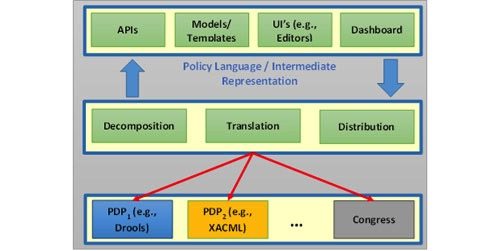Policy control and increased reliance on automation seen as key operational goals for AT&T ECOMP initiative
AT&T continues to tout the abilities of its enhanced control, orchestration, management and policy project, known as ECOMP, with the latest link connected to policy management.
Jen Yates, assistant VP at AT&T Labs, explained in a recent blog post that one of the goals for ECOMP is to provide for the “design, creation and lifecycle management of virtualized network functions” in a “flexible, dynamic, policy driven manner” allowing users to “dynamically control ECOMP’s behavior without changing the system software.”
“ECOMP’s policy component allows us to express, interpret and evaluate policies, and then pass them on to other ECOMP components or network elements for enforcement,” Yates wrote. “ECOMP policies capture the service provider’s intelligence – including proprietary domain knowledge related to how a service provider manages networks and services.”
A more specific goal of the platform is automating the life cycle of network-based services using control loops, which are designed to define how virtual machine, VNF and service impairments are controlled.
“As an example, a control loop policy might specify that if a VM is down or not responding (the signature), then the VM needs to be restarted (the response),” Yates said. “The signatures and responses that define a control loop are specified as policies within ECOMP – these capture the operations domain knowledge regarding the automation that is to be enabled.”

Policies are set to control aspects of ECOMP behavior, including service design, VNF change management and management of the behavior of ECOMP components; with the ECOMP policy framework including creation, evaluation, decision distribution and validation.
“The policy framework empowers operators and designers to control ECOMP’s behavior,” Yates added. “However, the domain knowledge captured in ECOMP policies is often distributed across many network operators and engineers, making it a challenge to collate. Machine learning comes to the rescue here by helping service providers automatically learn policies. In the case of control loops, machine learning enables signatures and responses to be automatically captured.”
AT&T unveiled the ECOMP initiative earlier this year, which it said was designed to automate network services and infrastructure running in a cloud environment. John Donovan, chief strategy officer and group president for AT&T Technology and Operations, explained the carrier has been working on ECOMP for nearly two years, tackling the project due to a lack of guidance for NFV and SDN deployments in a wide area network environment. ECOMP is said to provide automation support for service delivery, service assurance, performance management, fault management and SDN tasks. The platform is also designed to work with OpenStack, though Donovan noted it was extensible to other cloud and compute environments.
The carrier more recently detailed ECOMP’s data collection, analytics and events component, which it said was “responsible for collecting, managing, storing and analyzing data for an ecosystem of control loop automation systems and network and cloud services.”
“Imagine a world where everything is data driven,” said Mazin Gilbert, assistant VP for intelligent systems and platform research at AT&T Labs. “Your network is resilient, self-healing and self-learning. You can create, remove and instantly expand smart virtual functions – southbound network devices (i.e. firewalls, routers and switches) or northbound cloud services (customer care, ambient video, virtual reality, ‘internet of things”). This is possible with the power of ECOMP and DCAE.”
Bored? Why not follow me on Twitter

